Hey all, and happy greetings from Man, Côte d’Ivoire. I write to you from an internet cafe in the library of a hospital, on the fastest connection I’ve ever used in Africa. The room is spacious, there’s an air conditioner, the electricity seems stable, and I don’t have to pry the keys back up with my fingertips after I push them down. It’s cheap as well–roughly 38 cents per minute if I’m converting my CFA’s correctly. Oh, what a treat–what a treat this is.
Recently, I spent two weeks in Sierra Leone. Before going, I didn’t know much about the place, really–I knew what most people know. I knew there was recently a civil war, and I knew that the country is rich in diamonds. I knew that Kanye West made a song about Sierra Leone as well.
I spent my first week in the capital, Freetown, a very cool place and the subject of a future post. Many people I met in Freetown seemed to have connections in diamond mines, and many offered to show me how they work. I was very interested. Unfortunately, all connections fell through, and I was left to my own devices. So, after meeting up with my friend Cara with whom I traveled with in Rwanda, we headed up to Kono District–Sierra Leone’s diamond country–to see what we could find.
The main city in Kono is Koidu, a small and average place, with evidence of the mining industry on every corner. Many foreigners who come to Sierra Leone to mine have offices in Koidu, in which they broker sales and organize their operations. The Justin Bieber song “Diamonds” seemed to be pretty popular as well.
The town has a very “Wild-West” feel to it, both aesthetically and functionally. The main street is a remarkably wide dirt road, wide enough for a few cars and a few motor bikes to pass simultaneously. Since the area was hit very hard by the war, most buildings are ridden with bullet holes. Everyone in Koidu knows of the riches that are buried below, and everyone–locals and foreigners alike–wants a piece of it. Sierra Leone is one of the world’s poorest countries, and finding a diamond is a rather sure way out.
Here’s a shot of the main road in Koidu, just after sunrise:
On our first night in the city, when plying around for some fried chicken and a sachet of water, Cara and I struck up a conversation with the always-friendly, always-helpful, always a bit too interested token street teenagers, who offered to show us around a nearby mine the next morning. We exchanged numbers, found our chicken, and headed off to bed.
The next morning, we met one of the kids as planned, and began walking. Our now-guide, Kouyate, took us straight to a nearby mine, as promised: Cara and I were in for a very cool morning. The following photos document what we saw, and the comments what we learned. So, without further ado, an inside look at one of the country’s most important and influential industries: a photo essay of a diamond mine in Sierra Leone.
The process of mining diamonds is done in two ways: manually or mechanically. With the manual method–employed by most mining teams in Sierra Leone, as few can afford the heavy machinery–workers dig a large hole, take the dirt towards the bottom of that hole, run it through a hand-made sifter, and look for the rocks. With the mechanical method, a machine both digs the hole (it can accomplish in 2 hours what 10 workers can do in 3 months) and sifts the dirt. Mechanical operations are almost always funded by foreign companies.
Upon arriving at the mine, we began to meet some workers. We asked them about their lives, theirs jobs, and their goals. We took some pictures, in exchange for some small “gift money.” Small bills, furtively woven into a casual handshake, can really go a long way in developing countries.
The first two workers that we met, digging the trough and smiling for the camera:
The walk then continued, through small footpaths and across low streams, to a few more sites. A shot of a slightly larger mining block:
Since the rainy season is now beginning, the sites had fallen victim to a heavy shower the previous night. When there’s rain in the pit, the dirt cannot be dug; the water must be removed before continuing. While most sites are operated manually, the pumping of water is still done by machine. The thing is small, relatively affordable, and all but necessary.
Here’s a shot of an even bigger site, with the mechanical pump removing water, as workers continue to dig:
This site, as you can see, looks a bit more organized. Here, Cara and I had the chance to talk to the site manager–a very friendly Sierra Leonean with excellent English–who explained the operational logistics of mining diamonds in a bit more detail.
Diamond sites are generally sold in tracts of land measuring 100 by 200 feet (surprisingly, the United States is not the only country foolish enough to use the imperial system, much to the dismay of my engineering background). Sites must be paid for on a yearly basis, costing about $300 annually. All costs are fronted by the manager, and all operations are sanctioned by licensed organizations. Next, the manager pays his workers daily wages, ranging from between 10,000 Leones to 15,000 Leones–roughly $2.32 to $3.48–depending on how much time the worker puts in.
If a diamond is found, it is the manager who buys the diamond from the worker. As I understood, diamond brokers will only buy diamonds from site managers, so this way, the worker has little incentive to pocket the stone himself, or try to sell it to an office directly; if he wants to get paid, he’ll sell it to the manager as advised.
For a diamond of average size, a manager will pay the worker roughly $8,000 to $10,000–yes, dollars–and will of course sell it to a broker for slightly more. With this money, a worker may retire on the spot: he’ll move back to his home village, build a comfortable home with his family, and enjoy a life of hard-earned relaxation.
Once the holes are dug and the water is drained, the dirt must be sifted. In a manual operation, this is done with a homemade sifter. The worker takes a large pile of dirt to a nearby river, and, to the painful, aching chagrin of his back, uses the water to push the smaller particles out, leaving only minerals large enough to not fall through the net: diamonds, namely, included.
Here’s a shot of a worker sifting through the mud–a process he could go through thousands of times before finding anything.
He then uses his hands to search through the rubble:
If a diamond is found, it will be at the center of the sifter. No luck with this batch, unfortunately!
By the end of the morning, after talking to almost a dozen different groups of people, we left the mine with a bit more insight into one of the country’s most important industries. We learned about the process of mining, the ways to do it, and talked to some of the people involved. However, we still hadn’t seen a diamond!
In solution, our guide Kouyate did a bit of smooth-talking, and arranged for one of the site managers to head back to his house, and grab us a few rocks–money-laced handshake included, of course.
An hour later, we were staring at the real thing. We had images of grandeur, of gleaming pentaprisms cantillating revelrous chants of marriage and splendor. At the very least, we thought it would be bigger than this?
In all of it’s glory, a typical diamond from Sierra Leone:
A bit anti-climactic, nay? All the work–all the money–for just that?
That afternoon, Cara and I had a bit of time to digest what we had seen, and to try and assess the mining industry’s real place in Sierra Leone. Like many in West Africa, Sierra Leone is a country very rich in minerals, yet still very poor in terms of GDP, as well as standard of living. This dichotomy was especially apparent in Koidu itself: the city is sitting on tens of millions of dollars of mineral wealth, yet is still filled with bullet-ridden, dilapidated buildings leftover from a war that ended over 10 years prior. The workers still make less than $1,000 annually–the average Sierra Leonean family still only eats one meal per day. While the diamond trade is rich, it is not exactly enriching the citizens of the country from which it comes. Those with money–many foreigners, namely–finance large mining operations, and move most of the wealth right back out the way it came. Work conditions for miners are not favorable, and diamonds are never gauranteed to be found. All in all, the industry is not a pretty one.
On the contrary, however, Sierra Leone’s diamond mines no longer exist in a conflict zone. The workers seem to be paid fairly (although not appropriately), and the whole system is managed rather carefully. In one of the world’s poorest countries, for young and able bodies without access to an education, it just may be the best option there is.
To conclude the day, Cara and I went for a stroll through sunset Africa, on the road that lead us to the mine earlier that morning. While the relics from the war are very apparent in the center of town, they are far more apparent in the outskirts. Buildings are still crumbling, houses are still unrepared. There’s a lot of stuff that looks like this:
Nonetheless, living among it all still exists a people, a people that seem far more removed from the gory conflict than the structures around them, just a short decade after the fact. Hell, if not for the buildings, you’d probably never even know a war took place. Sierra Leoneans are still as friendly as the come, and the children are still smiling. The biggest thing on everyone’s mind, in fact, in Kono and the capital Freetown alike, seemed to be the country’s bright future that appears to lie ahead. Yet another example of a once-wartorn African nation, now heading in all the right directions.
De la jolie Côte d’Ivoire,
Will
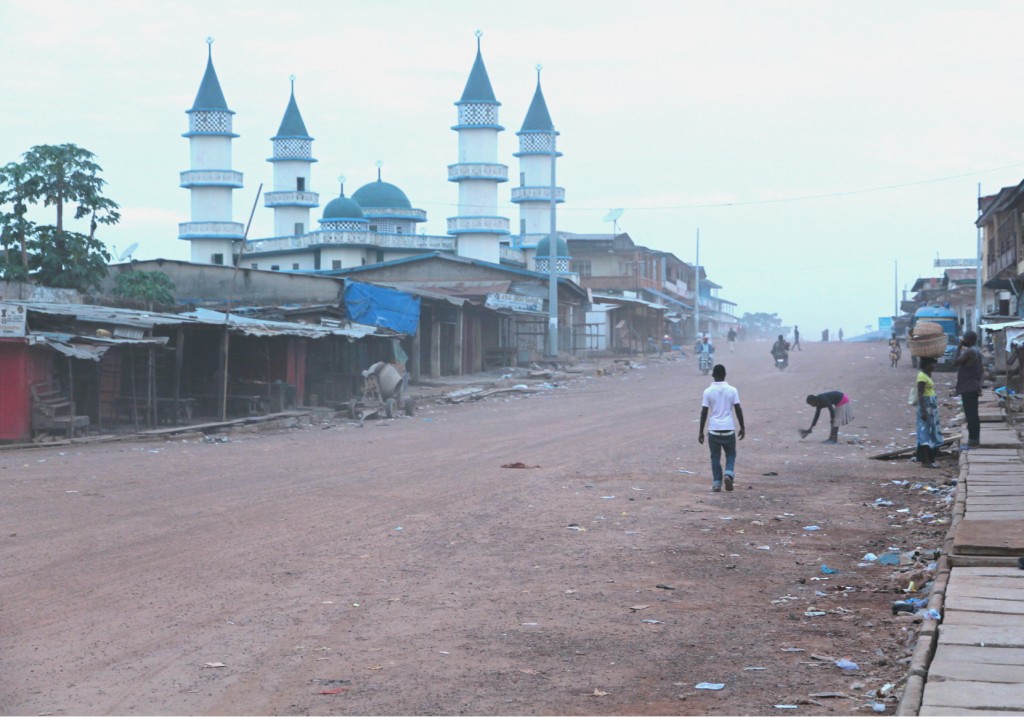
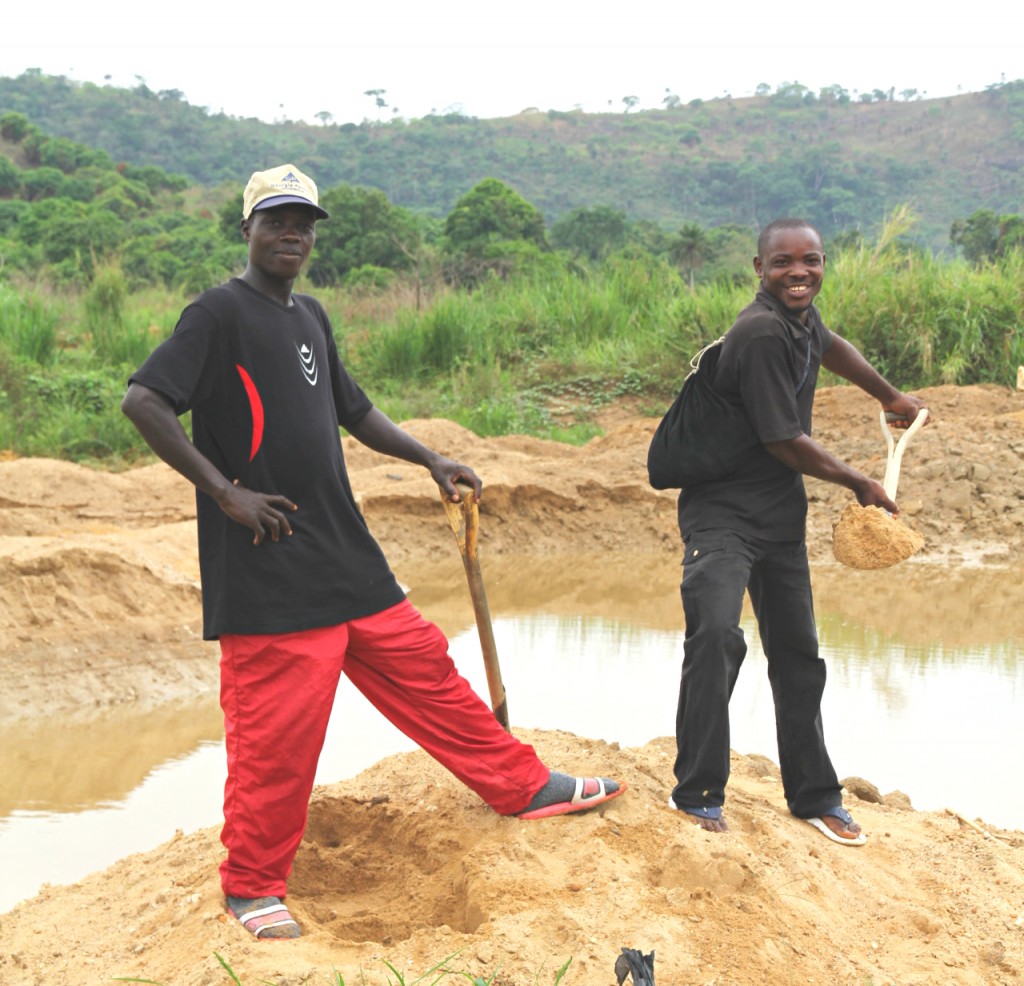
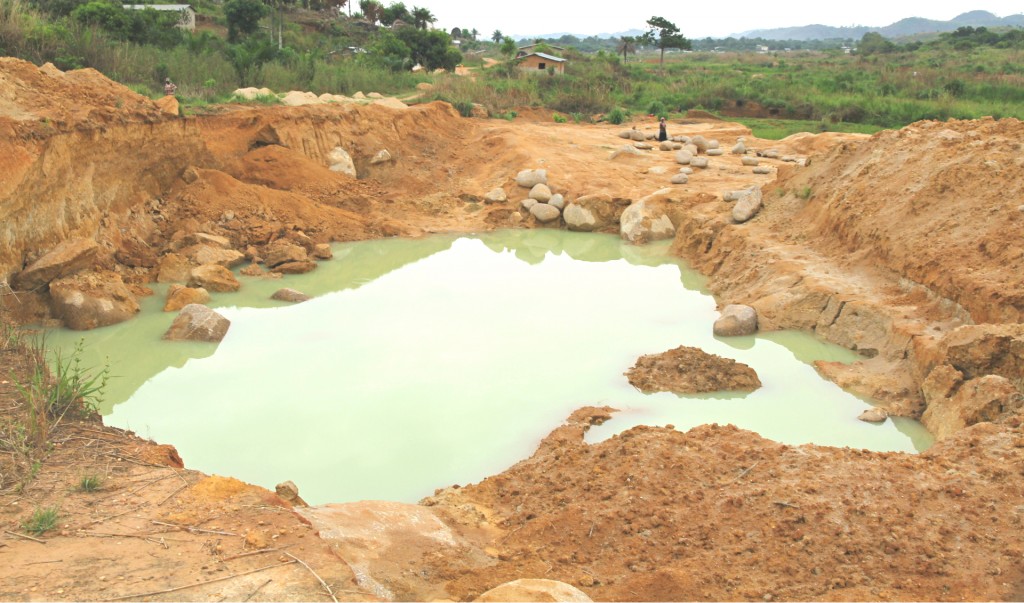
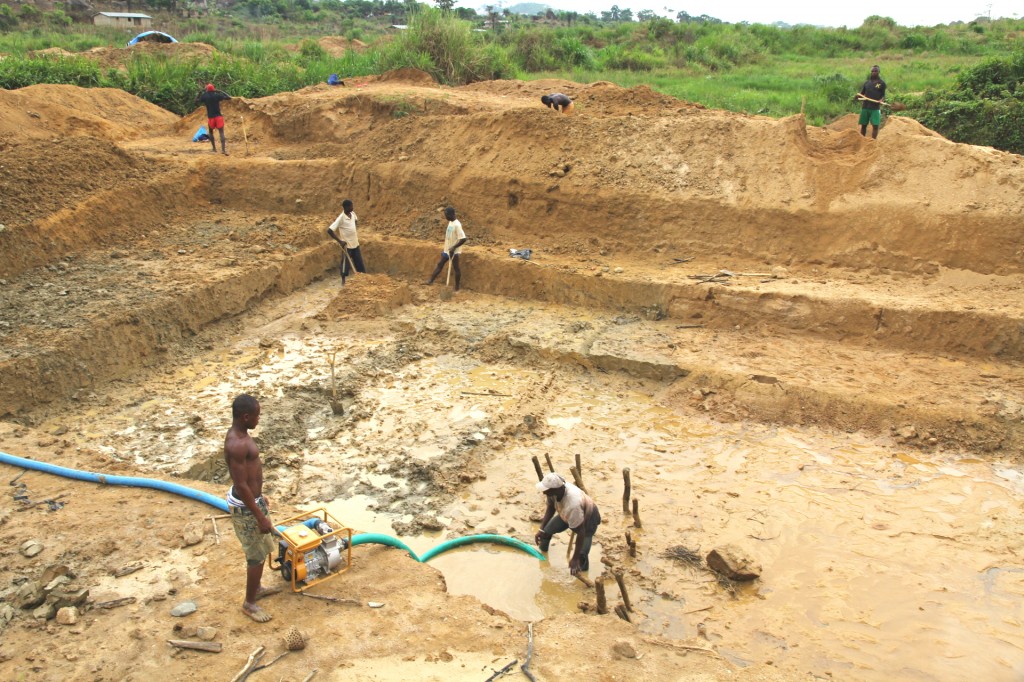
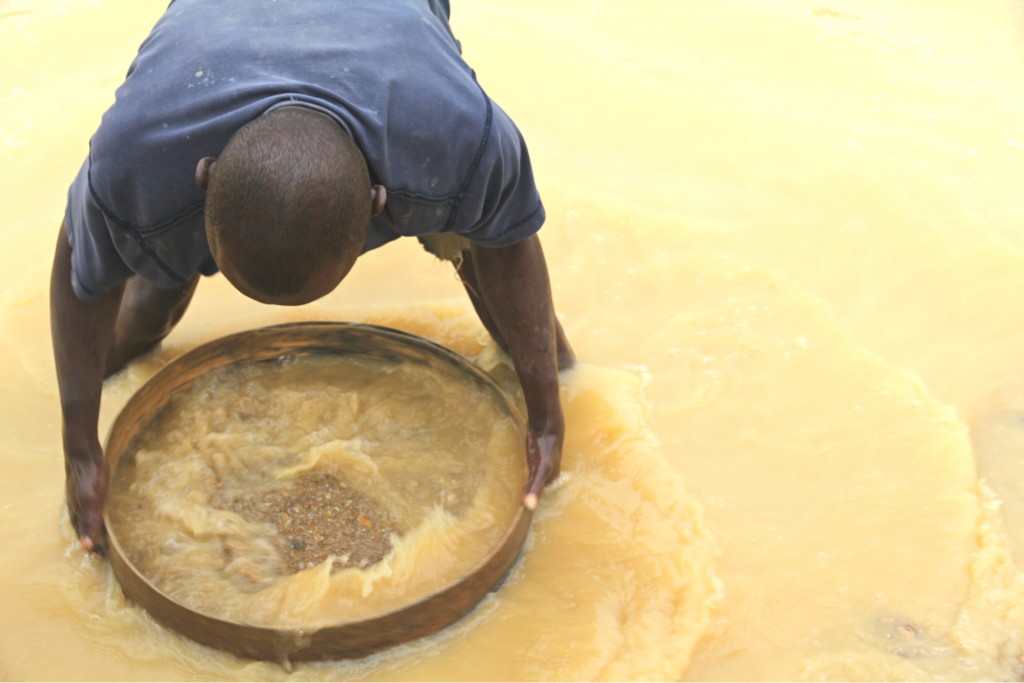
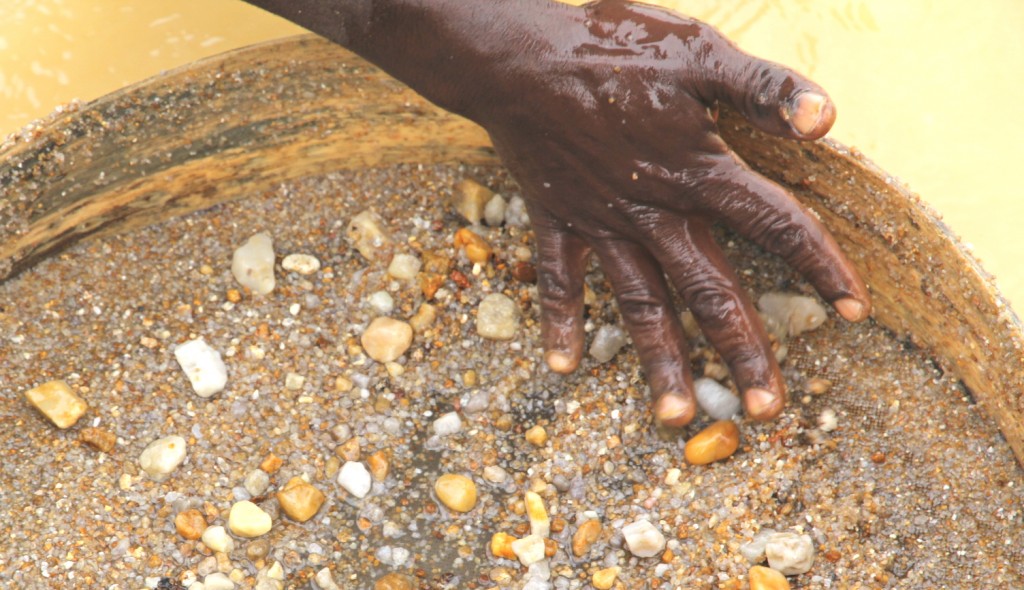
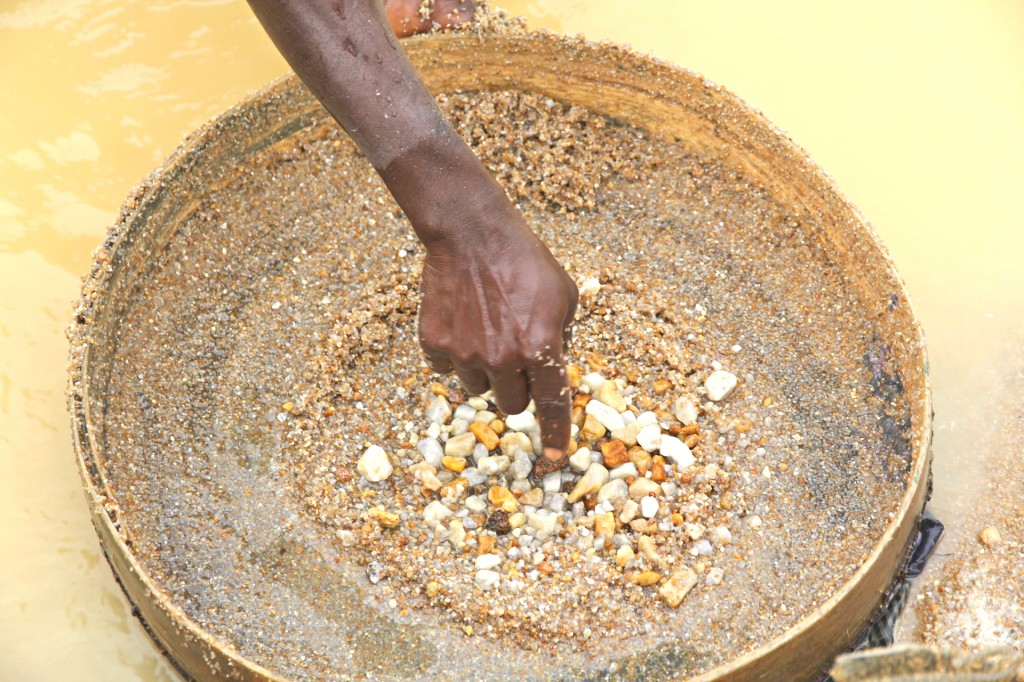
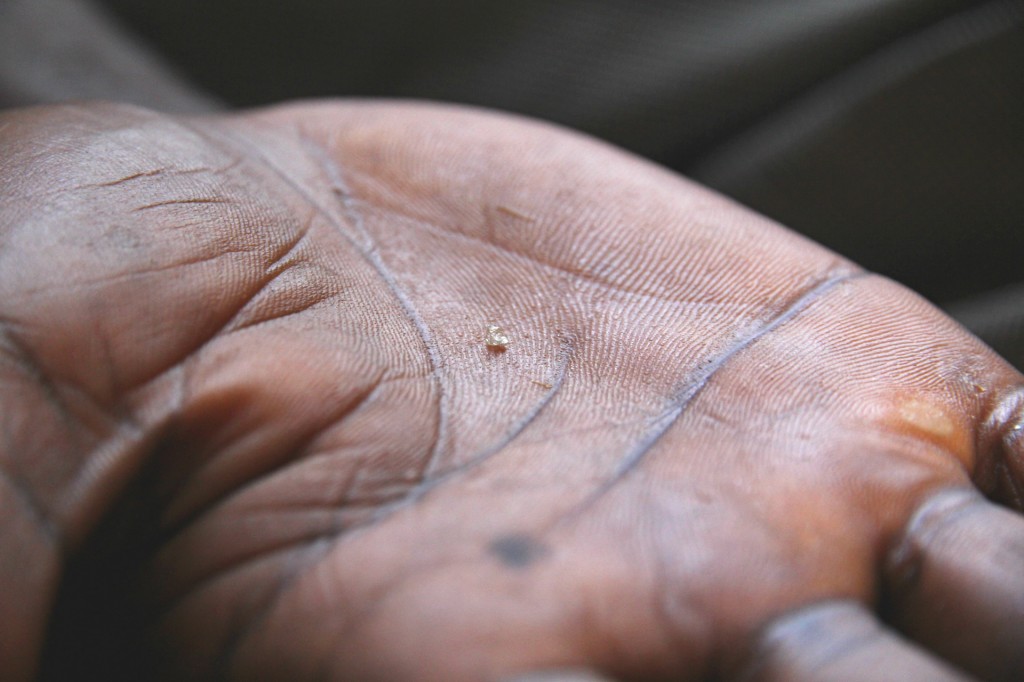
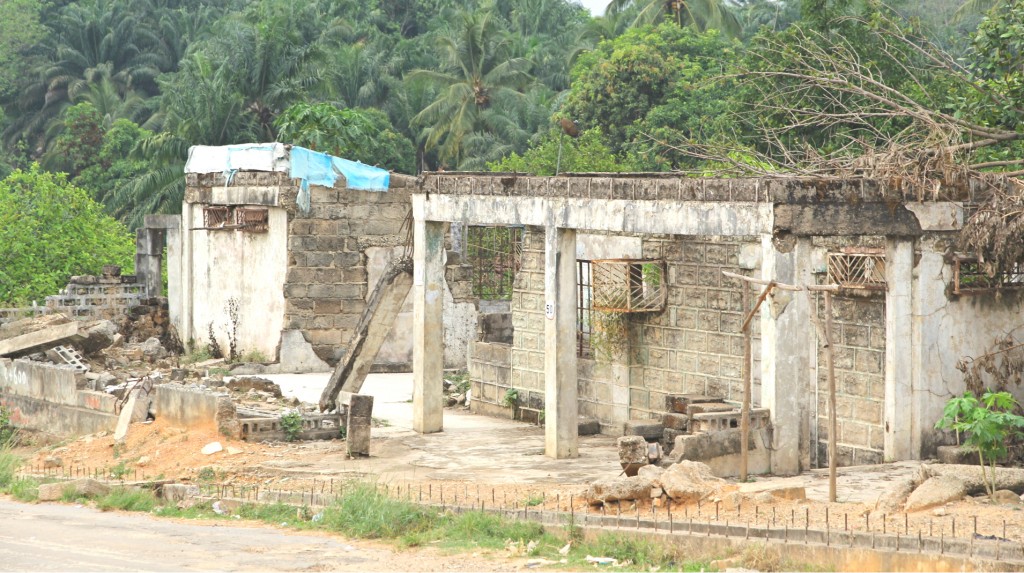
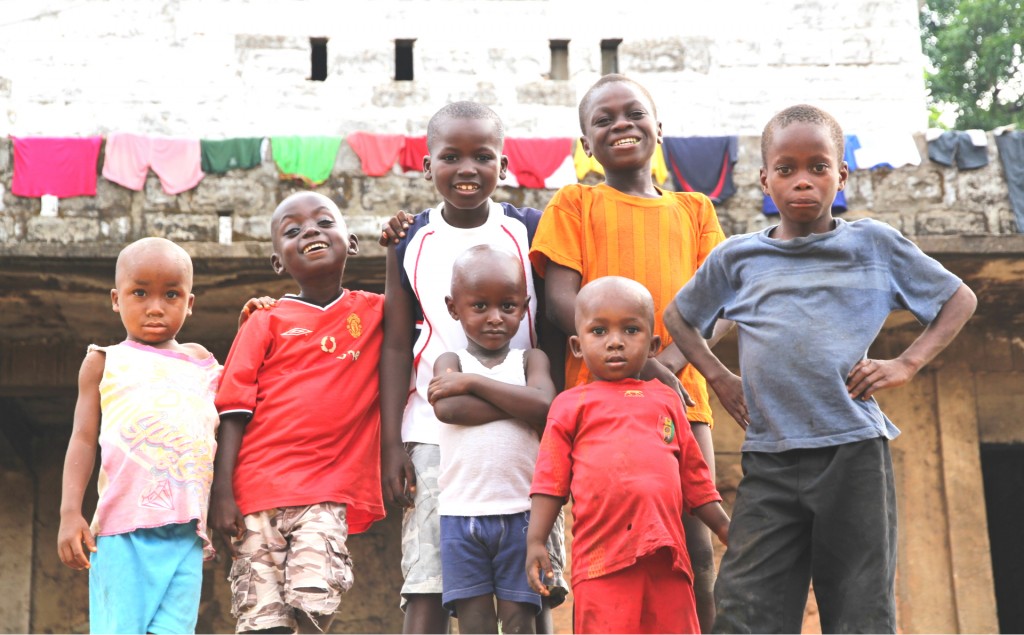
Will: great to see pictures with a story line. Very interesting, somewhat sad but hopeful too….
Thanks Lance! And yes–there is definitely some sadness to it. However, it’s not all bad. Just another basic, token reality of a developing country. A beautiful place nonetheless, with a bright future ahead it really does seem.
A very insightful report – as always. I was expecting a picture of a ‘Blood Diamond’ sized diamond … how can they possibly find diamonds that small when sifting?!
I’m glad to hear you think the country is moving in the right direction … but that seems to lie at odds with what you say about foreign companies’ intervention. How far can Sierra Leone really develop when almost all the wealth is being siphoned away? What are the chances local people will find any significant stones when the mechanical process is 100 times more efficient?
About two years ago, I visited Cameroon for 3 months and saw the same kind of influence. These companies mainly hailed from Europe and China and were usually in league with local, corrupt politicians, making ‘gift-money’ contributions through ‘casual handshakes’ as you describe. As much as the kids smiled and everyone showed limitless generosity, I couldn’t leave so optimistic about ordinary Cameroonians’ imminent prospects.
I’ve visited the diamond mine city Koidu in Kono too. Hopefully the country will stop suffering and will develop soon or later… !